DHS S&T Releases New Tool to Strengthen Global Navigation Satellite Systems for Critical Infrastructure


Space Security sector

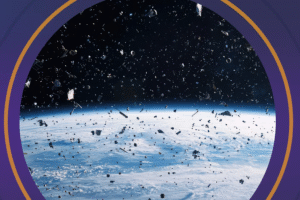


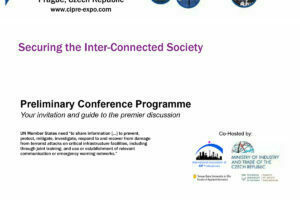
As someone responsible in your organisations for critical assets and/or infrastructure, Critical Infrastructure Protection and Resilience Europe is the leading conference that will keep you abreast of the changes in legislation, current threats and latest developments.
Download the Preliminary Conference Programme Guide at www.cipre-expo.com/guide.
What is the new directive on the Resilience of Critical Entities...
The Directive on the Resilience of Critical Entities entered into force on 16 January 2023. Member States have until 17 October 2024 to adopt national legislation to transpose the Directive.
The Directive aims to strengthen the resilience of critical entities against a range of threats, including natural hazards, terrorist attacks, insider threats, or sabotage, as well as public health emergencies.
Are you up to date on this legislation, and do you know what you need to do to be compliant?
Get updated on the NIS2 Directive and what it means to you...
An important discussion will centre around the EU cybersecurity rules introduced in 2016 and updated by the NIS2 Directive that came into force in 2023. It modernised the existing legal framework to keep up with increased digitisation and an evolving cybersecurity threat landscape.
By expanding the scope of the cybersecurity rules to new sectors and entities, it further improves the resilience and incident response capacities of public and private entities, competent authorities and the EU as a whole.
Businesses identified by the Member States as operators of essential services in the above sectors will have to take appropriate security measures and notify relevant national authorities of serious incidents. Key digital service providers, such as search engines, cloud computing services and online marketplaces, will have to comply with the security and notification requirements under the Directive.
What will this mean for you and how can you meet the Directives goals?
Critical Infrastructure Protection and Resilience Europe is Europe's leading discussion that brings together leading stakeholders from industry, operators, agencies and governments to collaborate on securing Europe's critical infrastructures.
The conferences top quality programme looks at these developing themes and help create better understanding of the issues and the threats, to help facilitate the work to develop frameworks, good risk management, strategic planning and implementation.
The packed event themes include:
- Interdependencies and Cascading Effects
- Emerging Threats against CI
- Crisis Management, Coordination & Communication
- Power & Energy Sector Symposium
- Government, Defence & Space Sector Symposium
- Communications Sector Symposium
- Information Technology (CIIP) Sector Symposium
- Transport Sector Symposium
- CBRNE Sector Symposium
- Technologies to Detect and Protect
- Risk Mitigation and Management
- The Insider Threat
- Business Continuity Management
- EU Horizon Projects Overviews
You are invited to be a part of this program, where you can meet, network and learn from the experiences of over 40 expert international speakers, as well as industry colleagues who share the same challenges and goals.
Please join us and the CI industry in the beautiful city of Prague, on 3rd-5th October, for a great programme of discussions that can help you to deliver enhanced security and resilience for your organisation.
Visit www.cipre-expo.com for further details
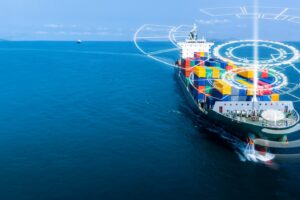
The “Space for Maritime Task Force” was recently launched by the European Space Agency (ESA) together with maritime stakeholders at the Italian Coast Guard Headquarters in Rome. The initiative acts on ESA’s vision to boost digital and green solutions, reducing emissions and enabling sustainable innovation.
In recent years, ESA Space Solutions has been cooperating with key stakeholders in the maritime sector via the Business Applications and Space Solutions (BASS) programme. These include a wide range of user communities and classes such as fisheries, coast guards, port authorities, military bodies, shipping companies, commercial operators, and international, national and European institutions. Through this cooperation, ESA has built strategic partnerships and supported several initiatives addressing domains such as maritime sustainability, ship tracking via satellite-based automatic identification systems (AIS), smart routing, autonomous vessels, water quality monitoring, the reduction of marine pollution and the green transition of ports’ eco-systems.
The Italian General Command of the Port Authority Corps - Coast Guard has, for some months, been working on a collaboration with ESA to foresee and enhance the use of space applications aimed at promoting sustainable innovation and transport in the maritime ecosystem. This collaboration has resulted in the creation of a standing committee, called the Space for Maritime Task Force (SMTF).
The Task Force aims to contribute to sustainability and maritime safety by increasing the use of innovative integrated solutions that exploit digital and space technologies, such as communications, navigation, and earth observation. This initiative will leverage active involvement of national institutions, Industry and research entities in the digital transformation of port and maritime services (e-Navigation), with a view to enhancing the sustainability of maritime transport. It will foster the innovative use of space technologies for supporting the shipping sector, for example in its transition to uncrewed shipping, as well as the implementation of a safe integration of uncrewed vessels within maritime transport provision, the monitoring of coastal areas and infrastructures, and maritime surveillance activity (in the domains of safety, security, fishing and the environment). The work will be divided into sub-topics of interest, which for the moment include "maritime sustainability", "green and smart ports" and "safety at sea and maritime security".
The results from the Task Force will be presented to international (International Maritime Organization - IMO) and European bodies, in order to contribute to the development and standardisation of requirements and innovative technologies aimed at improving maritime services. This will allow sustainable economic growth for all players involved. Rita Rinaldo, Head of the Projects & Studies Implementation Division at ESA Space Solutions commented “Collaboration with maritime stakeholders is key for ESA to support innovative solutions that exploit digital and space technologies, and to enable European space and downstream companies to contribute to sustainability and maritime safety.”
Partners in the Task Force include: the General Command of the Port Authority Corps - Coast Guard; European Space Agency (ESA); Italian Space Agency (ASI); National Inter-University Consortium for Telecommunications (CNIT); and the Directorate General for the Supervision of Port System Authorities, Maritime Transport and Inland Waterways.
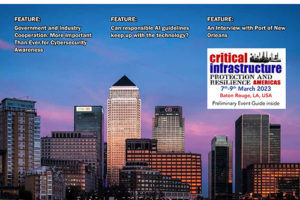
Please find here your downloadable copy of the Winter 2022-23 issue of Critical Infrastructure Protection & Resilience News for the latest views and news at www.cip-association.org/CIPRNews.
- A Standard to help protect Critical Infrastructure
- Government and Industry Cooperation: More Important Than Ever for Cybersecurity Awareness
- Help2Protect: an eLearning program to counter Insider Threats
- Testing Environments Help S&T and CISA Secure Transportation Infrastructure
- Can responsible AI guidelines keep up with the technology?
- Infrastructure Resilience Planning Framework (IRPF)
- An Interview with Port of New Orleans
- Critical Infrastructure Protection & Resilience North America Preview
- Industry and Agency Reports and News
Download your Critical Infrastructure Protection & Resilience News at www.cip-association.org/CIPRNews
Critical Infrastructure Protection and Resilience News is the official magazine of the International Association of Critical Infrastructure Protection Professionals (IACIPP), a non-profit organisation that provides a platform for sharing good practices, innovation and insights from Industry leaders and operators alongside academia and government and law enforcement agencies.
#CriticalInfrastructureProtection #CriticalInfrastructure #cybersecurity #help2protect #cisa #ciprna #resilience #cooperation
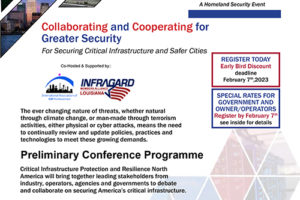
Critical Infrastructure Protection and Resilience North America will be held in Baton Rouge on 7th-9th March 2023, supported by IACIPP and Infragard Louisiana.
A fanstastic conference agenda addressing some of the big challenges facing CI operator/owners, government, agencies and the broader CI community.
A range of Workshops and Mini-Symposiums help drill deeper into specific sector challenges.
Download the latest CIPRNA agenda at www.ciprna-expo.com/PSG.
Register online at www.ciprna-expo.com/onlinereg
#criticalinfrastructure #criticalinfrastructureprotection #emergencymanagement #cisa #fema #tsa #emergencyresponse #disasterriskreduction #transportsecurity #energysecurity #telecomssecurity #cbrne #cybersecurity #security
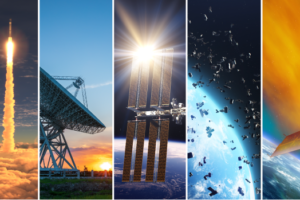
There are almost 5,500 active satellites in orbit as of spring 2022, and one estimate predicts the launch of an additional 58,000 by 2030. Large constellations of satellites in low Earth orbit are the primary drivers of the increase. Satellites provide important services, but there are potential environmental and other effects that this trend could produce (see figure).
Potential effects from the launch, operation, and disposal of satellites
For decades, satellites have been used for GPS, communications, and remote sensing. The number of satellites has recently increased, as thousands more have been launched to provide internet access.
But this increase may be disruptive. For example, it could lead to more space debris, which can damage existing satellites used for commerce or national security. We reviewed technologies and other tools to lessen potential effects. We also looked at mitigation challenges, like unclear rules and immature technology. To help address the challenges, we developed policy options, which may help policymakers achieve a variety of goals.
GAO assessed technologies and approaches to evaluate and mitigate the following potential effects:
- Increase in orbital debris. Debris in space can damage or destroy satellites, affecting commercial services, scientific observation, and national security. Better characterizing debris, increasing adherence to operational guidelines, and removing debris are among the possible mitigations, but achieving these is challenging.
- Emissions into the upper atmosphere. Rocket launches and satellite reentries produce particles and gases that can affect atmospheric temperatures and deplete the ozone layer. Limiting use of rocket engines that produce certain harmful emissions could mitigate the effects. However, the size and significance of these effects are poorly understood due to a lack of observational data, and it is not yet clear if mitigation is warranted.
- Disruption of astronomy. Satellites can reflect sunlight and transmit radio signals that obstruct observations of natural phenomena. Satellite operators and astronomers are beginning to explore ways of mitigating these effects with technologies to darken satellites, and with tools to help astronomers avoid or filter out light reflections or radio transmissions. However, the efficacy of these techniques remains in question, and astronomers need more data about the satellites to improve mitigations.
GAO developed the following policy options to help address challenges with evaluating and mitigating the effects of large constellations of satellites. GAO developed the options by reviewing literature and documents, conducting interviews, and convening a 2-day meeting with 15 experts from government, industry, and academia. These policy options are not recommendations. GAO presents them to help policymakers consider and choose options appropriate to the goals they hope to achieve. Policymakers may include legislative bodies, government agencies, standards-setting organizations, industry, and other groups.
Policymakers may be better positioned to take action on this complex issue if they consider interrelationships among these policy options. For example, implementing the fourth option (improving organization and leadership) may improve policymakers’ ability to implement the first and second options (building knowledge, developing technologies, and improving data sharing). Similarly, implementing the first option may help with the third option (establishing standards, regulations, and agreements). More generally, trade-offs between mitigations may emerge, the ongoing increase in new constellations may introduce unexpected changes, and a large and diverse set of interests from the global community may shift over time, all of which present persistent uncertainties. To address these complexities and uncertainties, the full report presents the policy options in a framework, which may help policymakers strategically choose options to both realize the benefits and mitigate the potential effects of large constellations of satellites.
Enabled by declines in the costs of satellites and rocket launches, commercial enterprises are deploying large constellations of satellites into low Earth orbit. Satellites provide important data and services, such as communications, internet access, Earth observation, and technologies like GPS that provide positioning, navigation, and timing. However, the launch, operation, and disposal of an increasing number of satellites could cause or increase several potential effects.
This report discusses (1) the potential environmental or other effects of large constellations of satellites; (2) the current or emerging technologies and approaches to evaluate or mitigate these effects, along with challenges to developing or implementing these technologies and approaches; and (3) policy options that might help address these challenges.
To conduct this technology assessment, GAO reviewed technical studies, agency documents, and other key reports; interviewed government officials, industry representatives, and researchers; and convened a 2-day meeting of 15 experts from government, industry, academia, and a federally funded research and development center. GAO is identifying policy options in this report.

The Australian Federal Government will begin consulting businesses, researchers and the community at large to identify critical technologies of national importance.
The List of Critical Technologies in the National Interest will clarify technologies the government considers to be vital to present and future demands.
The 2022 List of Critical Technologies in the National Interest will build on the 2021 List, which featured 63 technologies across seven categories including:
- Advanced materials and manufacturing
- AI, computing and communications
- Biotechnology, gene technology and vaccines
- Energy and environment
- Quantum; Sensing, timing and navigation
- Transportation, robotics and space
The consultation will run until Friday 30 September.
Federal Minister for Industry and Science, Ed Husic, said it is vital for Australia’s continued and future prosperity that emerging and critical technologies are promoted and protected.
“We know the development of critical technologies present enormous potential opportunities as well as risks for Australians,” Mr Husic said.
“It is vital we understand and send a clear signal about what technologies we should be focusing on and where our strengths lie – and that is exactly what this consultation is all about.”
The Federal Government has promised to invest $1 billion into critical technologies through its National Reconstruction Fund and will aim to reach 1.2 million tech industry jobs by 2030.
“This work is also part of our goal to reach 1.2 million tech jobs by 2030, as well as securing our supply chains and promoting Australia as a secure destination of excellence for investment, development and adoption of critical technologies,” Mr Husic said.
“The Government is also investing $1 billion in critical technologies as part of the National Reconstruction Fund, to build our strategic capability and power the economic growth we need to create jobs.”